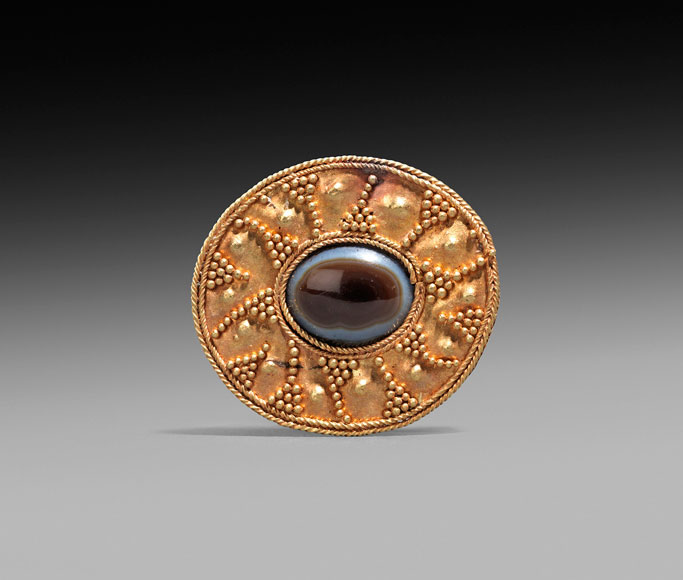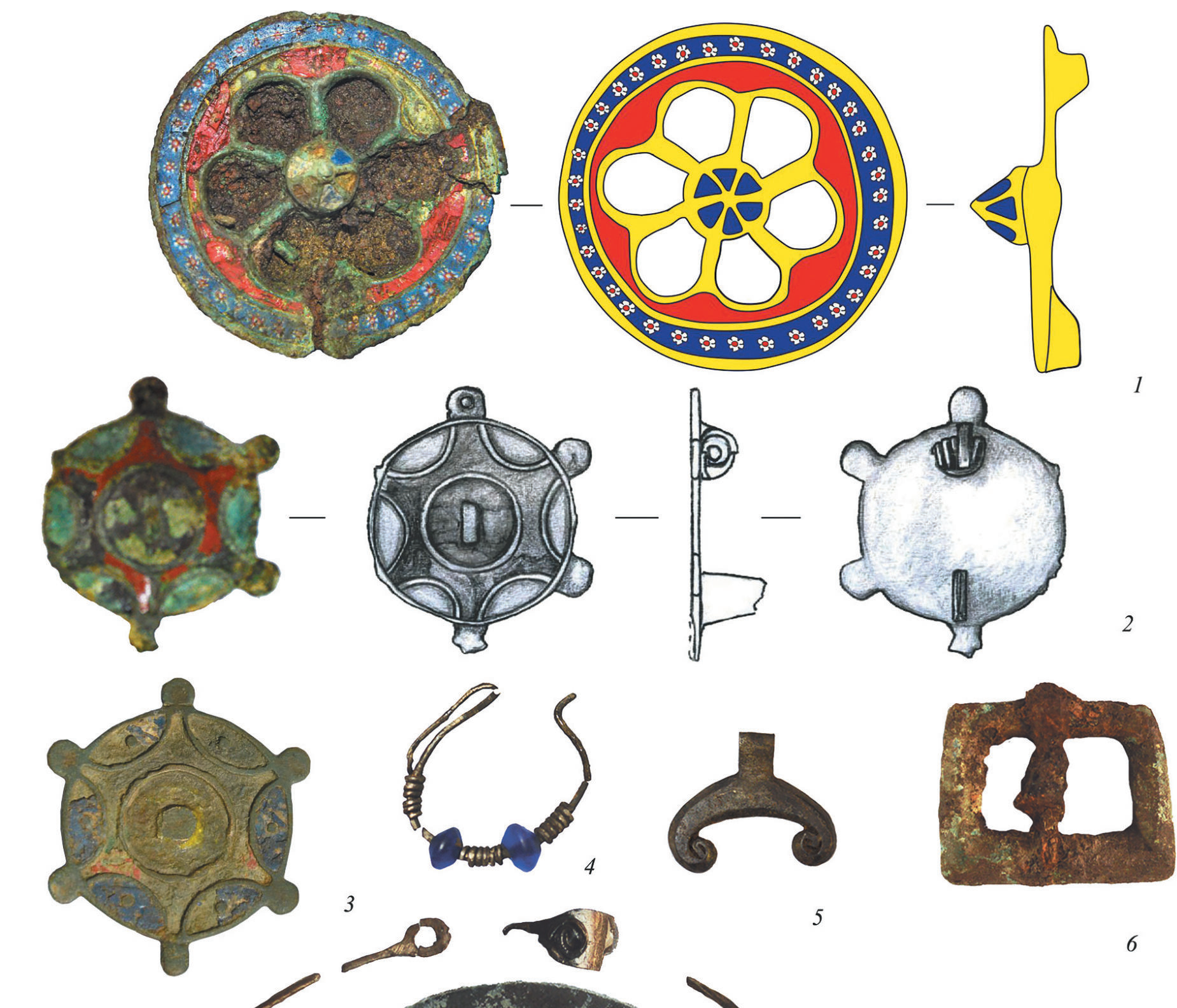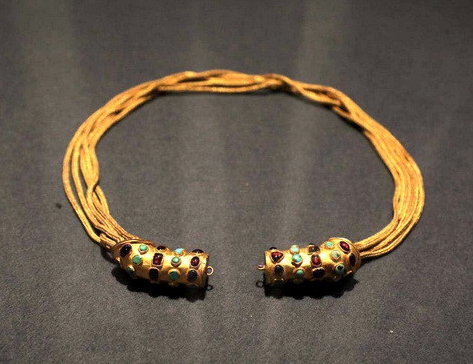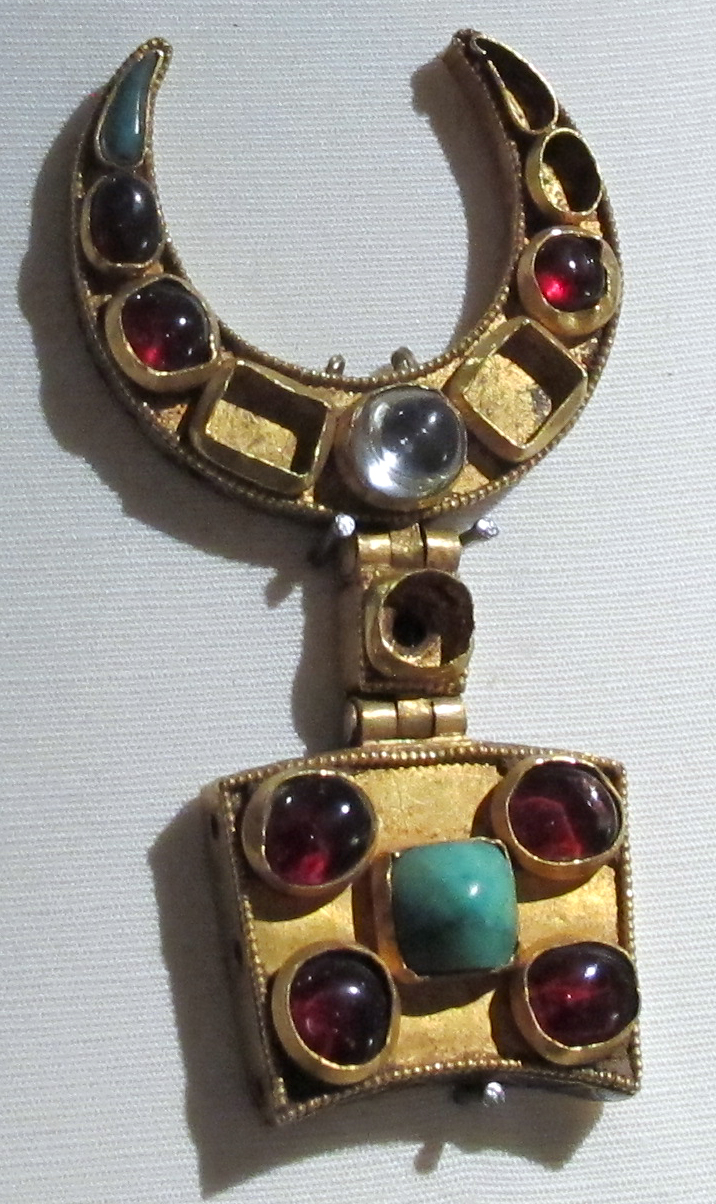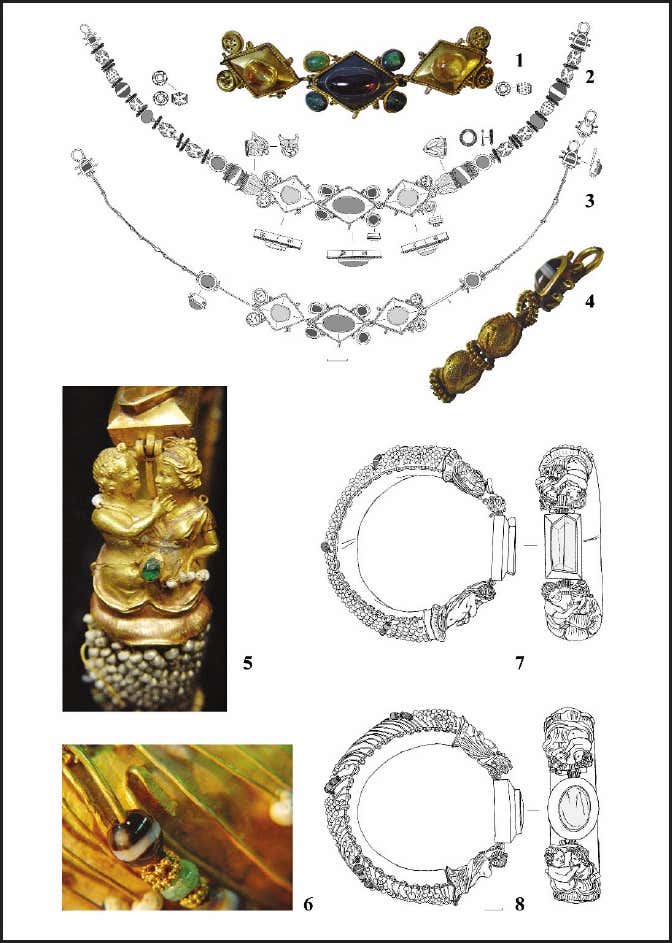Burial mound Старица the burial mound in the neighborhoods of village of Staritsa in Chernoyarsky rural area of Astrakhan region [the Astrakhan region – Volga region, Caspian Sea, South Russia, Kazakhstan].
Gold necklace with garnets, amber and glass; first half of 2nd century CE.
The Astrakhan Museum-Reserve https://ar.culture.ru/ru/subject/ozherele
“A necklace of 15 identical oval medallions was found in the burial of a Sarmatian woman during excavations of a burial mound near the village of Staritsa in the Chernoyarsk district of the Astrakhan region under the leadership of Valentin Shilov in 1961. In addition to it, a red-glazed cup and a bronze vessel with the stamps of ancient masters were found in the burial.
Each medallion in the necklace is decorated with raised inserts of garnet, amber and glass. From below, the stone was covered with an oval gold leaf, which became the base of the medallion. From above, at the edge of the base, a narrow gold band was soldered with an edge – it held the garnets in the nest. Each nest is framed with notched gold wire soldered onto the base of the medallion. Loops were soldered to the side of the medallions: they were connected like links in a chain, and a gold wire pin was threaded through them. This is how the medallions were fastened. The outermost elements are connected to a cord, which is woven from thin gold wires. To put on a necklace, a cord was passed through the loops at the ends of the cord. Each medallion, with the exception of the outer ones, is hung with a diamond-shaped flat pendant with an amber insert framed with pseudo-filigree. With this technique, the master cast a metal product in a special form, which imitated openwork soldered weaving. Necklaces of this kind were made in many centers, including Panticapaeum, Olbia, Chersonese, the cities of the Eastern Black Sea region, and were also common in Rome and the Roman provinces. But several inserts in the necklace were replaced with glass ones – these are traces of repair by the Sarmatians. The fact is that the Sarmatians believed that if glass is similar in appearance (color and shape) to a precious stone, then it also carries the sacred function of this stone, and therefore, if necessary, they easily replaced precious stones with glass.”
Literature:
M. Treister, Parthian and Early Sasanian „Imports“ in the Burials of the Nomads of Eastern Europe (2nd century BC — 3rd century AD) https://www.academia.edu
“Similar: the structure, but three-tiered, and the design of the castes demonstrate the necklaces from the hoard of the middle of the 1st century from Taxila. A close three-tiered structure also has a necklace in the collection of K. Raben, presumably originating from Daylaman. A multi-tiered structure is typical for not only necklaces originating from the territory of Iran, Afghanistan (Tillya-tepe) and Pakistan, but also for depictions on the reliefs of Palmyra and Hatra. Thus, there are certain reasons to assume an eastern (Parthia?, Gandhara?) origin of the necklace from Staritsa.”



